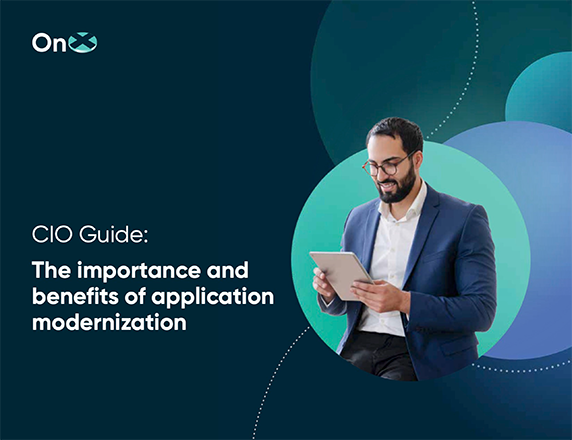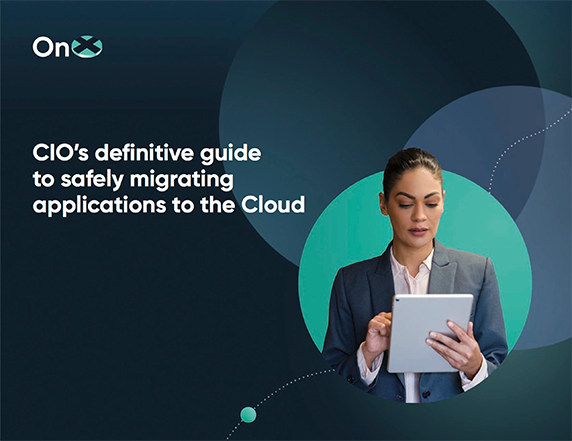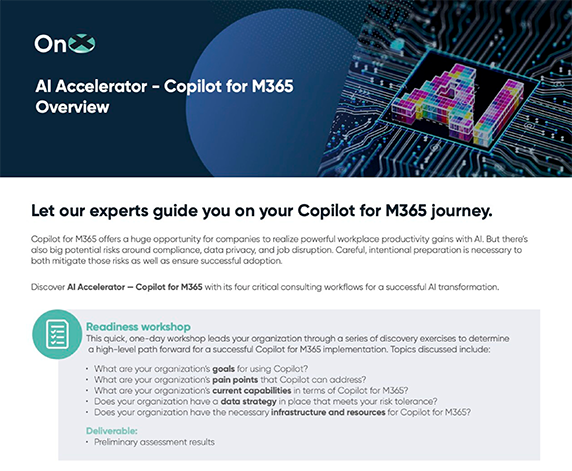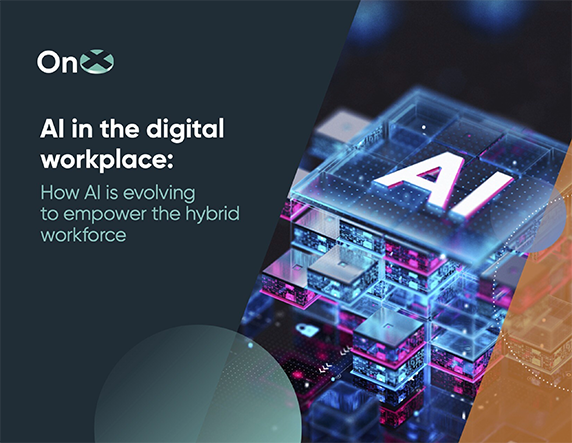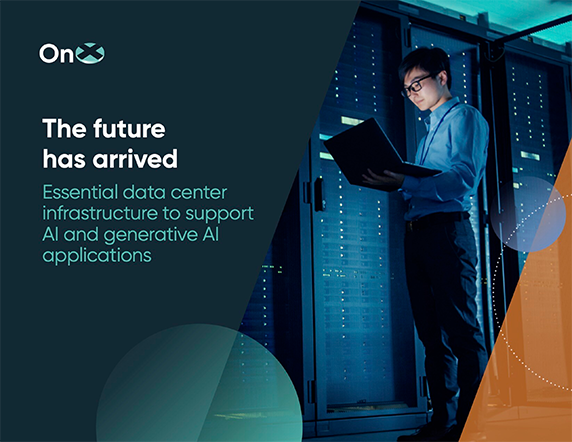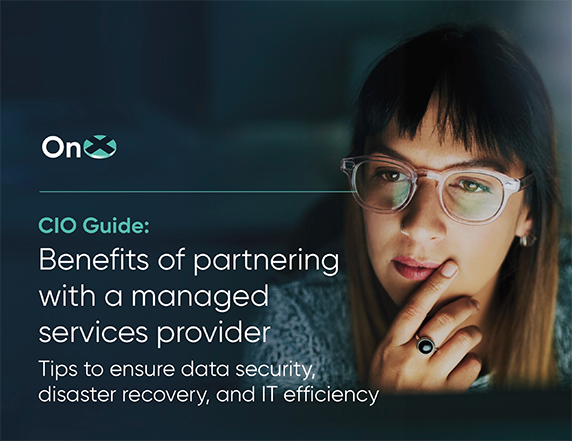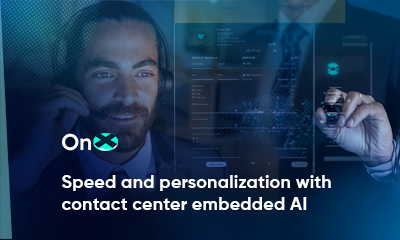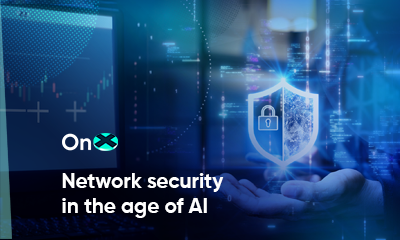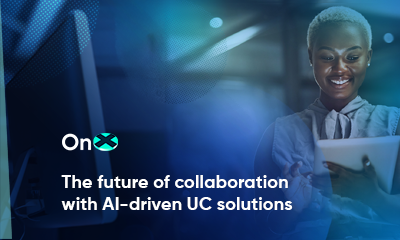
Enterprise networks are rapidly becoming more complex. Hybrid environments that combine cloud-based systems with legacy infrastructure require expert management, and a lack of resources can hinder business growth.
This complexity makes it challenging for even the most skilled IT teams to manage networks efficiently. To address this challenge, many organizations are turning to AI, specifically AI for IT operations (AIOps).
AI-enabled networks can both monitor and manage at scale, as enterprise infrastructure requires. However, there are still obstacles to overcome. AI implementations are not only a recent development within IT but also resource-intensive and reliant on effective training (of both AI models and IT teams). Experts are still discovering and addressing potential security and regulatory vulnerabilities at the network edge, which will remain in flux for the foreseeable future. Still, AI-powered networks are already driving significant growth, and businesses that fail to invest in AI will be left in the dust.
Facing either stagnation or risk, businesses are forced to consider three questions regarding AI networking:
- Is your organization ready for AI implementation?
- Is AI networking secure?
- Is AIOps effective?
This article will detail the challenges of AI networking and map out a path forward for growth-minded businesses.
Is AI networking secure?
As cybersecurity risks grow more complicated and consumers prioritize privacy and safety, businesses are focusing on these issues during their transformation. Security questions plague the process of AI implementation, especially since networking significantly impacts operations.
Before proceeding, technology leaders need to know how:
- Data and systems can be secured against malicious attacks.
- Sensitive data can be protected from dissemination by unpredictable AI models.
- Compliance rules can be met effectively, and how to stay on top of ever-changing regulations.
Security
Adopting AIOps can improve your security resilience, provided your organization is ready for it. With increased access to your data, AI models better understand the nuances of context. In turn, AI models can produce more refined outputs. AIOps works toward the goal of understanding and enhancing network configurations. When supplied with the latest threat insights, AIOps can be incorporated into AI-powered cybersecurity. This approach enables real-time threat detection and mitigation to align your security posture with the modern threat landscape.
Data privacy
National and international news outlets often feature stories about cyberattacks that compromised enterprise systems with public-facing AI implementation models. These situations proved to be learning opportunities for AI professionals who have since implemented intensive training and evaluation processes that strengthen consumer-facing AI against potential threats. Along with rigorous training and comprehensive prompt testing before a model’s public launch, fundamental data protection principles still apply to AI implementation.
Organizations can protect sensitive information from misappropriation and breaches by restricting data collection, ensuring transparency when using personal data, and separating particularly sensitive information from public-facing AI.
Regulatory compliance
Regulations cannot keep pace with the evolution of AI technology. The effort of regulators to keep pace with change translates to compliance rules shifting from one week to the next. Noncompliance could jeopardize reputation or result in fines. Keeping up-to-date with applicable regulations is critical to successfully implementing AI.
With this in mind, partnering with a managed services provider (MSP) can be highly beneficial. A consultant can focus on regulation changes and manage the necessary system updates, often before you become aware that changes are needed..
Is AIOps effective?
There are two main concerns in implementing AI networking: will its integration with the organization’s current technology stack be successful, and will staff willingly adopt and employ the technology in their daily tasks? Regardless of the success of AIOps implementation, the return on investment is diminished if the workforce is not using it. This ambiguity often causes IT leadership to opt for what employees already know. But this restricts the transformation potential. Crucial objectives of AI implementation include:
- Achieving seamless integration throughout as much of the network as possible.
- Ensuring and optimizing the output accuracy of AI models.
- Diminishing uncertainty and encouraging staff adoption with training initiatives.
Integration and precision
Adding access to more data streams increases the accuracy of AIOps. Forecasting and recommendations are more precise when the AIOps platform has visibility across as many systems as possible, including non-technical business intelligence.
However, providing that information to an AIOps platform can be challenging, particularly if any of it continues to be stored on legacy systems. For AI implementation to succeed, the process should begin –before installation– by auditing data sources, assessing integration potential, and modernizing infrastructure. Only when an organization invests in the input is the quality of an AI model’s output assured. AI can serve as a driving force for businesses to begin their digital transformation now, before it becomes even more complex as time passes.
Fostering adoption
IT leaders are not the only ones uncertain about AI implementation. Customers and staff are also doubtful of AI’s efficiency and ethos, which can restrict AI adoption and potential. However, concerns can be reduced by assuring accuracy and demonstrating the benefits that AIOps can bring to the team.
Every step of the process must be highly visible so that employees can ask questions and offer insights. This approach will raise confidence levels and assure staff that the technology is in place to enhance their success.
Is your organization ready for AI implementation?
AIOps includes collecting, storing, maintaining, and analyzing significant volumes of data. Organizations that still depend on legacy systems need a fundamental transformation to implement AIOps and AI networking. The scope can seem overwhelming, but organizations must eventually transition to modernized networking anyway. The more they put it off, the more they will lag.
IT leaders planning for AI should initially prioritize:
- Organizing data sources to train AI models.
- Confirming the infrastructure will meet AI’s computational requirements.
- Accessing the resources and the skill sets that will successfully implement and manage AI.
Modernizing network infrastructure is vital to managing the volumes of enterprise data that are processed, stored, and transmitted daily. When AIOps engines are supplied with training data, close monitoring is critical. Storage and processing may require cloud-based integrations. Dependable transmission and scalability rely on adaptable architecture and high bandwidth.
Professional guidance is key to evaluating every possible data source, planning the integration, and modernizing where needed. Expert managed service providers can more rapidly assess the efficacy of existing infrastructure. With extensive experience and the requisite skills for streamlining integration, an MSP can assist businesses by optimizing the transformation process. AIOps has the power to modernize and simplify the IT environment. As the reach and impact of the AIOps engine expands, it will start to automate, improving network management and driving your strategy forward.
Read more: OnX and Palo Alto Networks unite for future-ready networking
AIOps expertise that forward-thinking organizations need
AI implementation can seem daunting, and not without reason. It requires internal teams to learn new skills, re-examine a significant part of the enterprise technology stack, and add new security protocols. Then, there is also the need to communicate changes to stakeholders.
Unsurprisingly, industry-leading organizations are bringing on additional support. OnX has comprehensive experience with high-performing business solutions and AI-enabled networks. We partner with our clients to strategize their journey to AI readiness. To start overcoming the obstacles on your path to AI implementation, contact OnX today.

